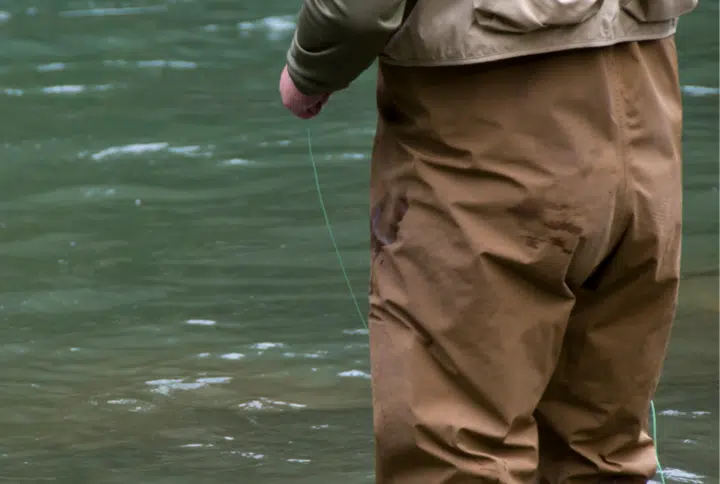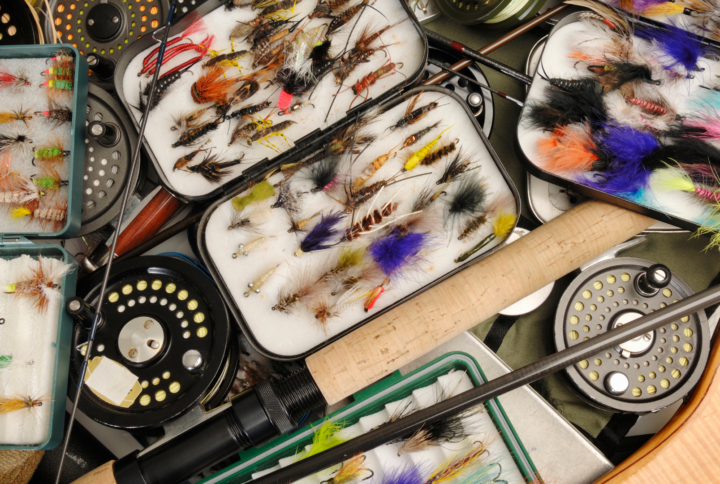South Fork Cumberland River - Leatherwood Fork - Tennessee
Fly Fishing River Report & Conditions
South Fork Cumberland River – Leatherwood Fork - Water Flow Chart
South Fork Cumberland River – Leatherwood Fork - Weather report & radar
South Fork Cumberland River – Leatherwood Fork - General hatch chart
| Month | Hatch | Time of Day | Recommended Fly Sizes | Popular Fly Patterns |
|---|---|---|---|---|
| January | Midges | Morning-Afternoon | #18-#22 | Zebra Midge, Griffith’s Gnat |
| Winter Stoneflies | Midday | #16-#20 | Black Stonefly Nymph | |
| February | Midges | Morning-Afternoon | #18-#22 | Zebra Midge, Griffith’s Gnat |
| Winter Stoneflies | Midday | #16-#20 | Black Stonefly Nymph | |
| March | Blue Winged Olive (BWO) | Afternoon | #18-#20 | BWO Dry Fly, Pheasant Tail Nymph |
| Little Black Caddis | Late Afternoon | #18 | Elk Hair Caddis (Black) | |
| Midges | Morning | #18-#22 | Zebra Midge | |
| April | Hendricksons | Afternoon | #12-#14 | Hendrickson Dry Fly, Red Quill |
| March Brown | Afternoon | #12-#14 | March Brown Dry Fly | |
| Caddis | All Day | #14-#18 | Elk Hair Caddis | |
| May | Sulphurs | Afternoon-Evening | #14-#18 | Sulphur Dry Fly, Sulphur Nymph |
| Green Drakes | Afternoon-Evening | #10-#12 | Green Drake Dry Fly | |
| Golden Stones | Afternoon | #8-#10 | Golden Stone Nymph | |
| June | Light Cahills | Evening | #12-#14 | Light Cahill Dry Fly |
| Terrestrials | All Day | #10-#16 | Ants, Beetles, Hoppers | |
| July | Terrestrials | All Day | #10-#16 | Ants, Beetles, Hoppers |
| Tricos | Morning | #20-#24 | Trico Spinner | |
| August | Terrestrials | All Day | #10-#16 | Ants, Beetles, Hoppers |
| Tricos | Morning | #20-#24 | Trico Spinner | |
| September | Terrestrials | All Day | #10-#16 | Ants, Beetles, Hoppers |
| Blue Winged Olive (BWO) | Afternoon | #18-#22 | BWO Dry Fly | |
| October | Blue Winged Olive (BWO) | Afternoon | #18-#22 | BWO Dry Fly |
| Caddis | All Day | #14-#18 | Elk Hair Caddis | |
| November | Blue Winged Olive (BWO) | Afternoon | #18-#22 | BWO Dry Fly |
| Midges | Morning-Afternoon | #18-#22 | Zebra Midge | |
| December | Midges | Morning-Afternoon | #18-#22 | Zebra Midge |
| Winter Stoneflies | Midday | #16-#20 | Black Stonefly Nymph |
South Fork Cumberland River – Leatherwood Fork Access Points
The South Fork Cumberland River – Leatherwood Fork offers some of the best fly fishing opportunities. Here are the primary access points to this region:
- Leatherwood Ford: This location can be accessed from Route 297. It is considered a popular spot due to the number of sizable rainbow and brook trout.
- John Muir Overlook & Bandy Creek: The latter is an ideal camping region with quick access to the Leatherwood Ford. The former offers spectacular views and trails leading towards fishing spots. Accessible from Divide Road.
- Rock Creek: Accessible via Rock Creek Loop, it offers ample opportunities for fly fishing.
- Hazel Creek: Another popular location, offering a variety of species. Access from Route 297.
All sites are well-maintained and offer ample parking. Please ensure all fishing abides by the local regulations.
South Fork Cumberland River – Leatherwood Fork Fishing Spots
The South Fork Cumberland River – Leatherwood Fork is renowned amongst anglers for its fly fishing spots. Here are the high-ranking locales:
- Blue Heron Area: Renowned for rainbow and brown trout, this crystal-clear water makes for an excellent sight-casting scenario.
- Bear Creek: A tributary offering brook trout apart from rainbow and brown trout. Solitude is a bonus here.
- Station Camp: Frequented by locals, this spot boasts of good trout populations year-round and provides fun dry fly opportunities.
- Big South Fork Scenic Railway: Near the railway is an entry to an accessible area of the river teeming with trout.
Apart from these, there are several smaller tributaries and creek mouths along the Leatherwood Fork that offer incredible fly fishing experiences. Anglers are advised to carefully check local fishing regulations before starting their journey.
South Fork Cumberland River – Leatherwood Fork Local Fish Species
- Trout – The South Fork is home to a large variety of trout, most notably cutthroat, rainbow, and brown trout. They are top targeted species for fly fishing in the region.
- Bass – Bass species like the smallmouth and largemouth bass are also frequently targeted due to their abundance and impressive fight.
- Black Crappie – An exciting species for fly fishermen as they are known for their eager bites and acrobatic fights.
- Yellow Perch – A popular target because they are easy to catch and are found in large numbers in the South Fork.
- Channel Catfish – Although not a traditional choice for fly fishing, they provide an experience like none other when caught with a fly rod.
- Bluegill – Fly fishermen fancy this species for their aggressive strikes and fierce battles, especially during their spawning season in the early summer.
- Pike – These predators can be targeted using larger baitfish patterns, typically rewarding the angler with a strong fight and potential for larger size.
- Walleye – Although a challenge for fly fishing, the South Fork of the Cumberland is known to hold sizeable Walleye which can provide a rewarding experience for the angler upon capture.
About the South Fork Cumberland River – Leatherwood Fork
Delve into the fascinating history of the South Fork Cumberland River, commonly known as the Leatherwood Fork. This charmingly wild river is snuggled in Kentucky’s scenic landscape, and over the years it has etched a significant course in the region’s history. The earliest known settlers around the stream were the Cherokee tribes who greatly revered the lush, untamed beauty of the Leatherwood Fork.
Fast forward a few centuries, the river transformed into an essential waterway for trade. In the mid-18th century, adventurous pioneers set up trading posts along the embankments. Notable among them was Leatherwood Station that became a critical junction in the western trade routes.
Today, the Leatherwood Fork is a popular spot for recreational activities, boasting exceptional opportunities for:
- Fishing
- White water rafting
- Kayaking
Undoubtedly, the South Fork Cumberland River is more than just a water body – it’s a testament to Kentucky’s rich past, thriving present, and promising future.
Community Contributions
Be part of the fishing community!
No updates submitted for this river.



